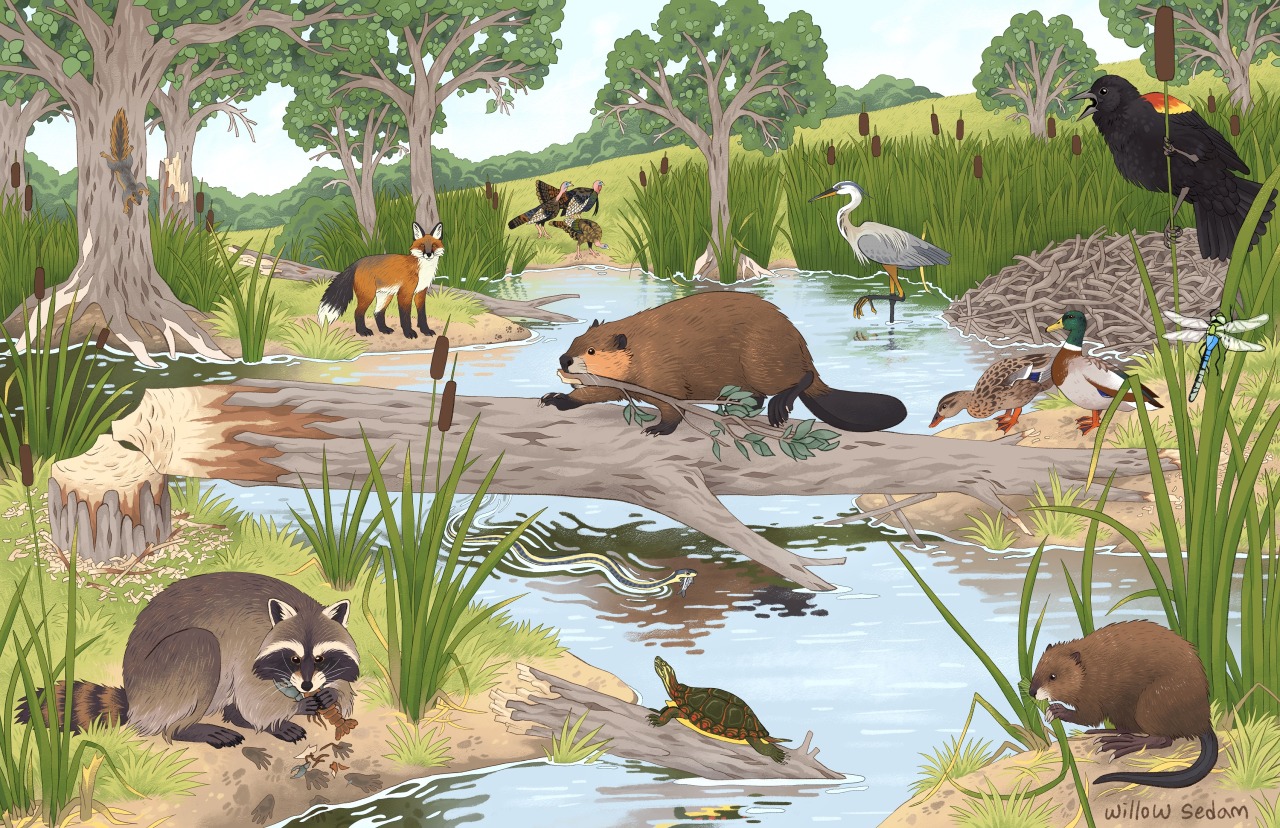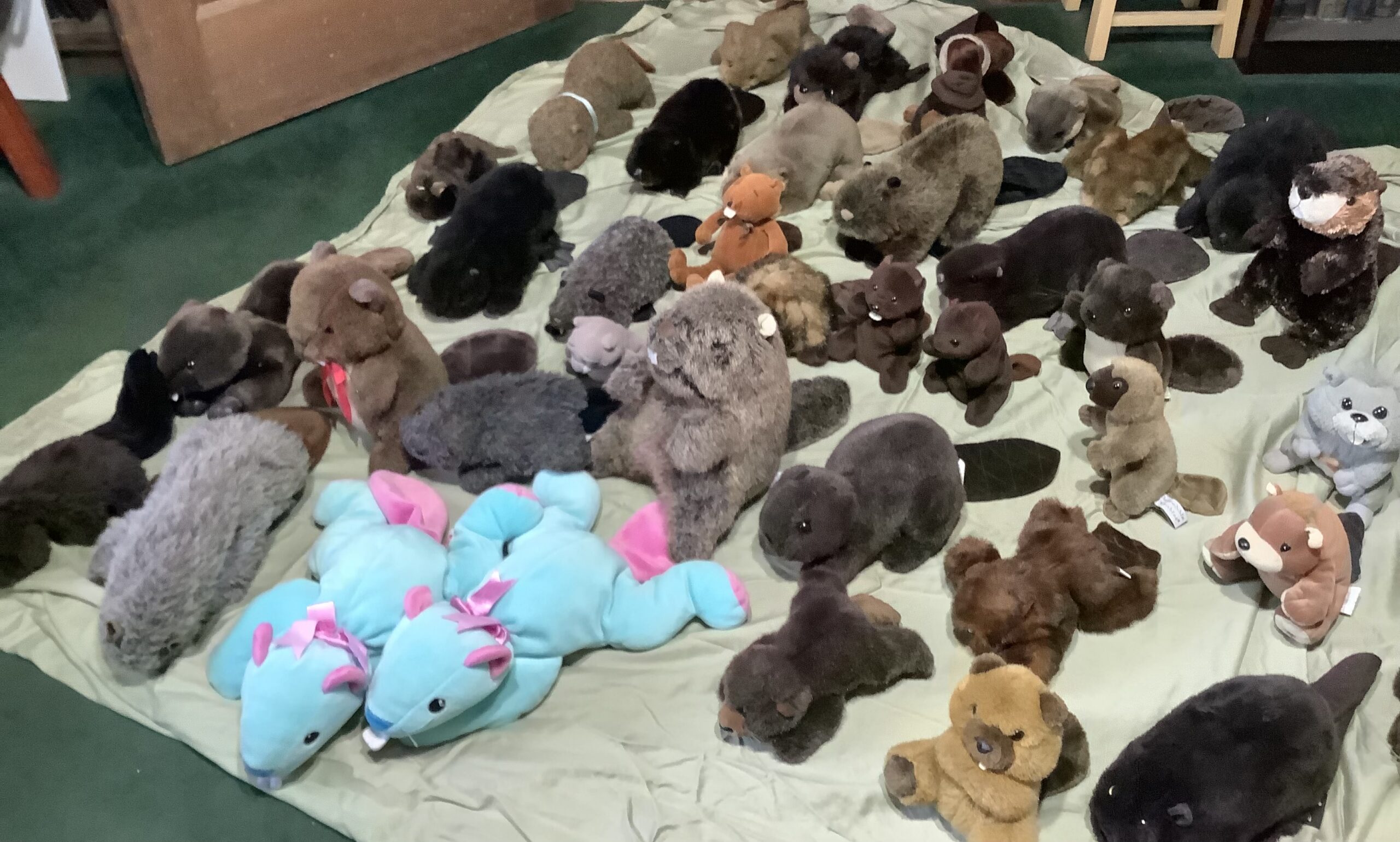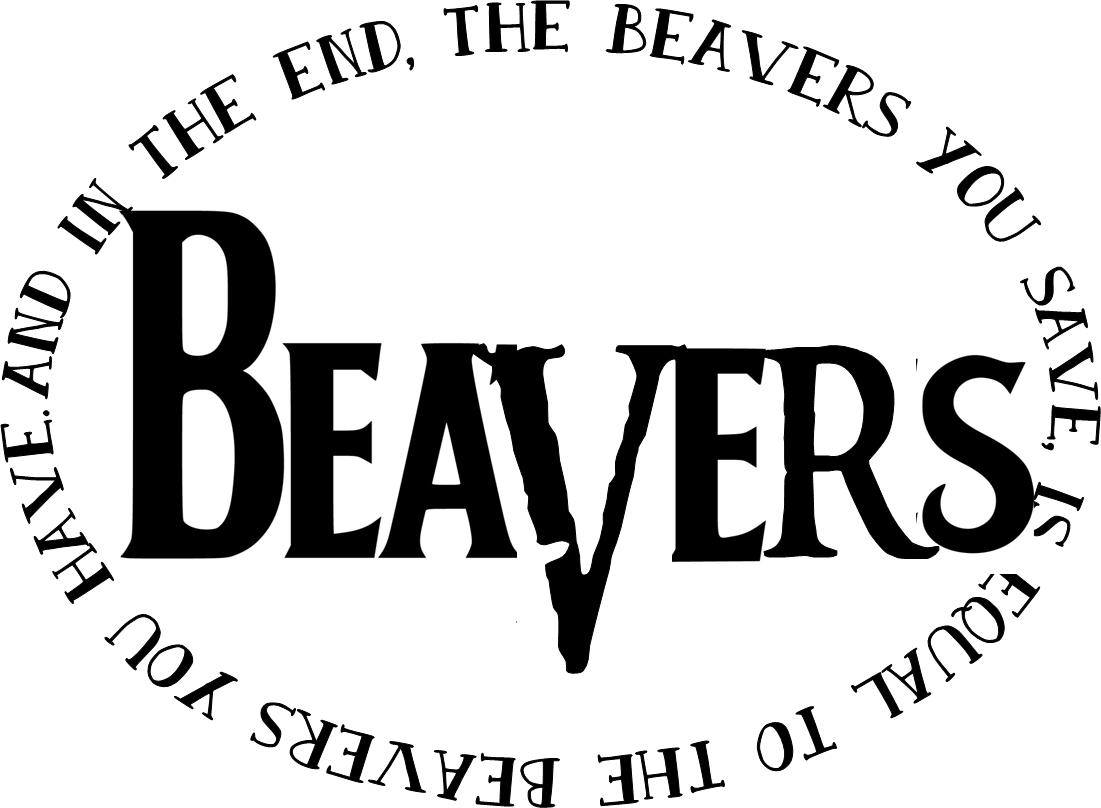Author: heidi08
How much do you love this artwork? The illustrator is Willow Sedam from Colorado. This lovely illustration needs to be at a beaver festival soon don’t you think?
 This is Leslie and her daughter Missy in their lovely home in Solano county. As a child Missy was a great lover of beavers and filled her entire bedroom with a growing collection of her favorite things, (Clearly a child after my own heart). Together they volunteered for the Lindsey beaver project at MVSD in 1998 and she even remembers kits walking out of the water directly over her own feet! For a host of reasons I shared earlier that I believe one of those kits was our original mother beaver with her distinctive tail!
This is Leslie and her daughter Missy in their lovely home in Solano county. As a child Missy was a great lover of beavers and filled her entire bedroom with a growing collection of her favorite things, (Clearly a child after my own heart). Together they volunteered for the Lindsey beaver project at MVSD in 1998 and she even remembers kits walking out of the water directly over her own feet! For a host of reasons I shared earlier that I believe one of those kits was our original mother beaver with her distinctive tail!
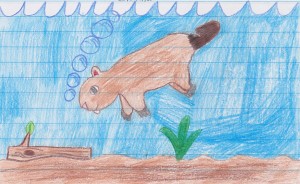 Now that her daughter is an adult and married Leslie needs to repurpose the room she has decided to part with some of the beavers. (imagine!) She wanted them to go to someone who would love them as much as they both did and contacted me earlier this year about a possible donation. Which means not only were they very generous for beavers they had to fork over BRIDGE toll just to give them away!
Now that her daughter is an adult and married Leslie needs to repurpose the room she has decided to part with some of the beavers. (imagine!) She wanted them to go to someone who would love them as much as they both did and contacted me earlier this year about a possible donation. Which means not only were they very generous for beavers they had to fork over BRIDGE toll just to give them away!
I thought maybe we could help them find homes with lucky children at our 16th festival. Maybe another great beaver giveaway? Maybe a game show? A treasure hunt? What do you think?
I’ve been feeling lately like we’re getting to be in a new world. That my old fashioned concerns about cities losing patience with beavers are quaint, like an old hippie in a Volkswagon bus complaining about “the man“. It’s a new age for beavers. A whole new age. And it’s might be time for people to start patting my head and saying condescendingly, “Okay beaver boomer we got things from here.”
Just check out THIS article. I was sure it was from Washington state at first. But Squamish is in British Columbia.
Dam good news: Why Squamish needs beavers
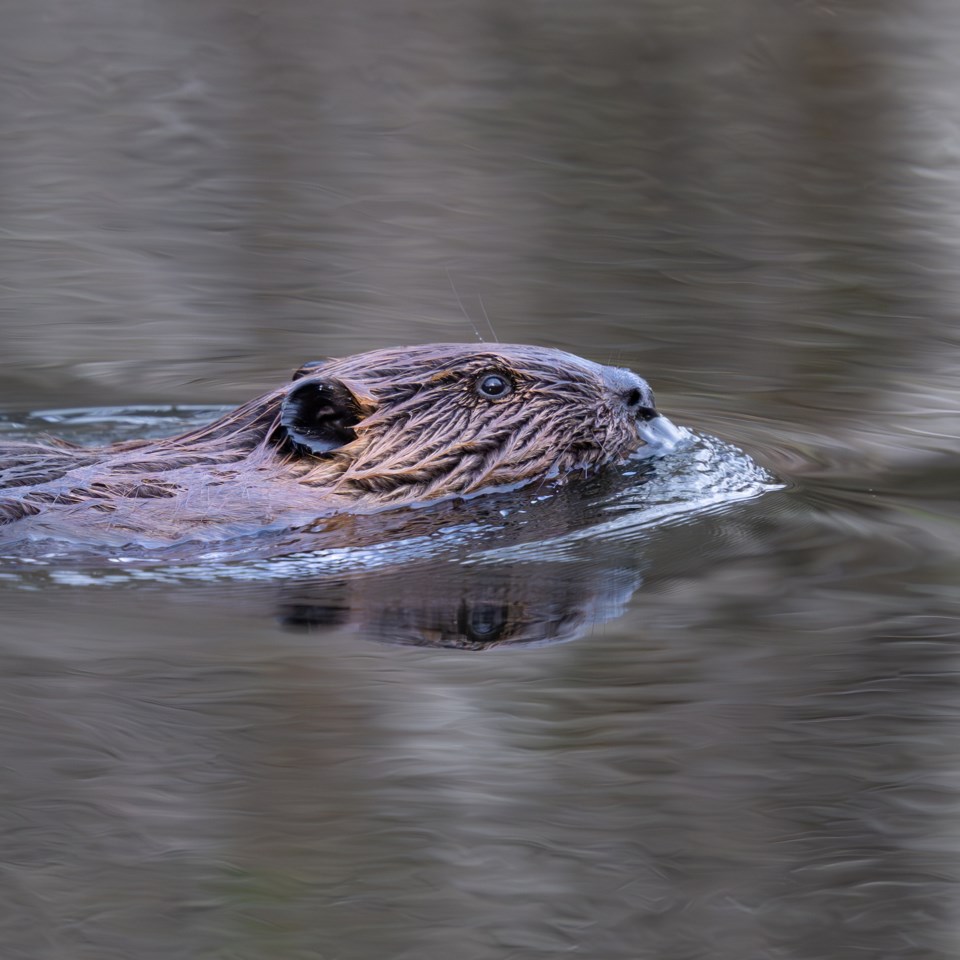 Have you spotted a beaver dam around Squamish?
Have you spotted a beaver dam around Squamish?
At first, one might think, “Oh no, is that going to be a problem?” But actually, it’s pretty exciting.
While beavers sometimes get a bad reputation for disrupting urban spaces, experts say their presence is actually a great sign for the health of our local ecosystems.
Jennifer Rae Pierce, an expert in urban wildlife and biodiversity, has studied beaver populations and their role in city environments. In a recent conversation with The Squamish Chief, she explained how beavers are a keystone species, meaning their activities help sustain a rich, biodiverse ecosystem.
“They create environments that support a wide range of species and contribute to resilient ecosystems,” Pierce said. “Beavers help store water in the land, which is especially crucial for drought management. They also support fish populations and enhance water quality in many cases.”
Wait. What? An urban wildlife specialist that promotes beavers and isn’t me? An I dreaming? Who is this woman?
Urban bioiversity Hub. I like the sound of that. Do you think she ever heard of Martinez?
Living with beavers
Of course, living alongside beavers isn’t always easy.
They cut down trees and flood certain areas, which is why some landowners want them removed. But according to Pierce, relocating them doesn’t really work.
“The habitat is what attracts beavers,” Pierce said.
“Even if you remove them, more will come unless the environment is changed. Also, beaver relocation is costly and difficult because finding suitable, unoccupied habitat is rare. Beavers are territorial and will struggle to establish themselves in a new place.”
So instead of removing them, Pierce recommended simple solutions like installing water flow devices (also called “beaver baffles”).
These help maintain controlled water levels without disrupting beaver habitats.
Worried about your favourite tree? There’s an easy fix.
“If people are concerned about trees being cut down, they can wrap wire mesh around them or use a paint mixed with sand, which discourages beavers from chewing on them,” Pierce added.
Boom! Beavers help biodiversity in cities and even if they cause an issue it is better to fix it and here are some easy tools to do so.
I am very close to retirement. Or as they say in the UK about layoffs “Being made redundant“, Wow.
Pierce believes locals should embrace beavers instead of seeing them as a nuisance.
“People can show their support by engaging with local authorities and property owners,” she said. “Decision-makers sometimes assume the public is against beavers when, in reality, many people love seeing them and appreciate their ecological benefits.”
Some communities in Metro Vancouver have already stepped up, preventing beaver relocations through activism and education.
For Pierce, one fun way is through storytelling and social media.
“Some places have given their beavers names and even [X] accounts,” Pierce said with a laugh. “It helps people connect with them and see them as part of the community.”
Okay admit it, You think I secretly wrote this article and made up Ms Pierce. I almost do myself. But no, its legit. I swear on a stack of beavers. That’s just the world we live in now.
Want to spot some beavers? Head to the wetlands around the Squamish River, Alice Lake Provincial Park, or the Mamquam River.
It maybe time for this beaver boomer to hang up her worry beads.
If you were watching PBS news hour thursday night you might have seen something amazing. Of course there was the usual segment about climate change, but this was slightly more cheerful than fires in LA or evaporation in the North.
Why engineers are turning to beavers for insights into managing water resources
Beavers and the dams they build are not always embraced in the areas where they do their work. But there’s a growing recognition that they also are building a kind of natural infrastructure that helps with water management and the climate. Science correspondent Miles O’Brien went to see the beavers at work during their busy season and has the story for our ongoing coverage of Tipping Points.
Sure it’s persuasive to your average PBS donor to have a spunky hydrologist measuring silt and flying drones at a beaver pond, but if you ask me the real magic comes at the end when a man on a horse says that beavers improve his “Crick” and make grass for his cattle.



